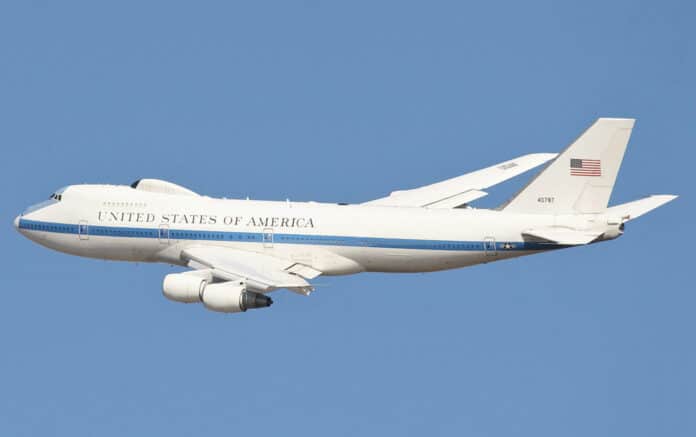Sierra Nevada Corporation (SNC) has landed a colossal $13 billion contract from the Air Force to replace the aging fleet of E-4B planes. These planes, also known as Nightwatch or the National Airborne Operations Center, are primarily responsible for transporting the Defense Secretary. But they also act as mobile nuclear command and control outposts.
The new Survivable Airborne Operations Center (SAOC) is set to replace the E-4B planes, and the contract is expected to run through July 2036.
After successfully modifying smaller aircraft, SNC is now expected to upgrade Boeing’s 747-8i aircraft, as confirmed by the plane manufacturer in December 2023. This award is a testament to SNC’s expertise in the field, having previously worked on various military aircraft programs, including the Air Force’s A-29 Super Tucano, M-28 Special Operations aircraft, C-130s, and the Army’s Athena ISR program.
With the U.S. Congress having passed appropriations for fiscal 2024, the Air Force has $744 million to invest in the SAOC program this year alone. Looking ahead, the Air Force is seeking an additional $1.7 billion for FY25.
As part of its ongoing efforts to modernize its nuclear portfolio, the U.S. Air Force is undertaking several multibillion-dollar endeavors, including the SAOC program. This ambitious project involves the development and production of the SAOC Weapon System, which includes engineering and manufacturing development aircraft, associated ground systems, production aircraft, and interim contractor support.
Under the terms of the contract, SNC will be responsible for adding crucial systems to the aircraft, such as air refueling and secure communications, while also ensuring that the aircraft is hardened against nuclear and electronic attacks. The work is set to be performed in Englewood, Colorado; Sparks, Nevada; Beavercreek, Ohio; and Vandalia, Ohio, with a completion date of July 10, 2036.
The E-4B, a militarized version of the Boeing 747-200, is a highly capable airplane that is designed to be an airborne operations center. It has four engines, a swept-wing design, and is capable of refueling in flight. The main deck is divided into six functional areas, including a command work area, conference room, briefing room, operations team work area, communications area, and rest area. It can accommodate up to 111 people, including a joint-service operations team, Air Force flight crew, maintenance and security component, communications team, and selected augmentees.
One of the most impressive features of the E-4B is its advanced electronics and communications equipment, which is protected against the effects of electromagnetic pulse. It has an electrical system that can support a wide range of advanced electronics, including an advanced satellite communications system that provides worldwide communication for senior leaders through the airborne operations center.
The E-4B is also equipped with nuclear and thermal effects shielding, acoustic control, an improved technical control facility, and an upgraded air-conditioning system for cooling electrical components.
In order to offer direct assistance to the President, the Secretary of Defense, and the JCS, at least one E-4B is always on alert and generated as a NAOC, making it available 24/7. Additionally, a global watch team is stationed at one of many carefully selected bases all over the world to ensure seamless operations.
The Air Force Global Strike Command serves as the resource manager for the E-4B, providing important services such as aircrew, maintenance, security, and communications support. The JCS directs the operations of the E-4B, which are executed through U.S. Strategic Command.
